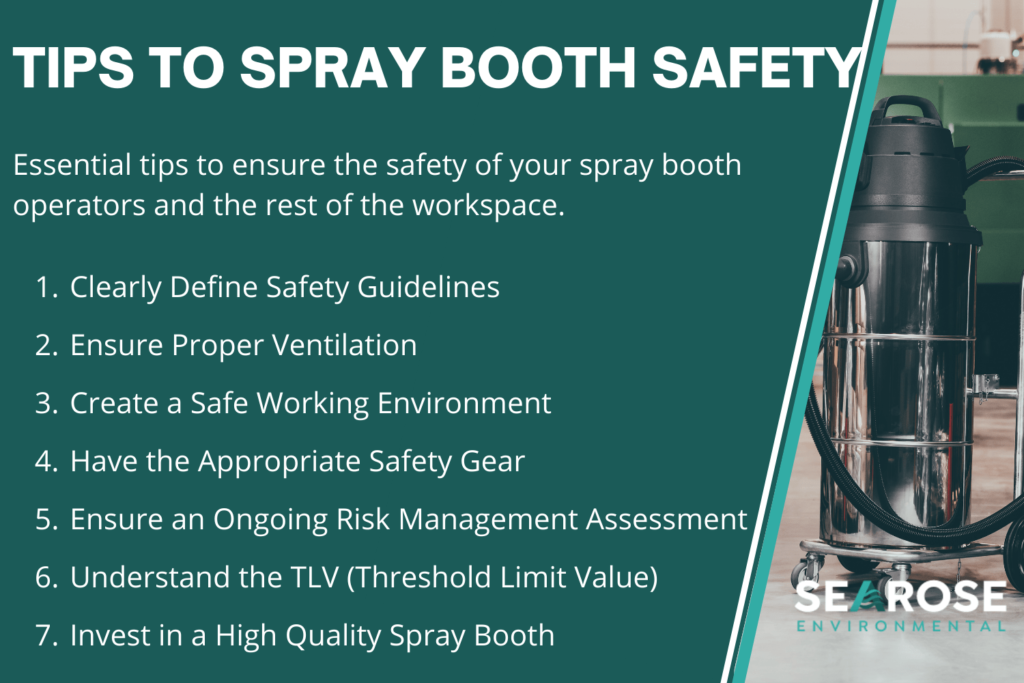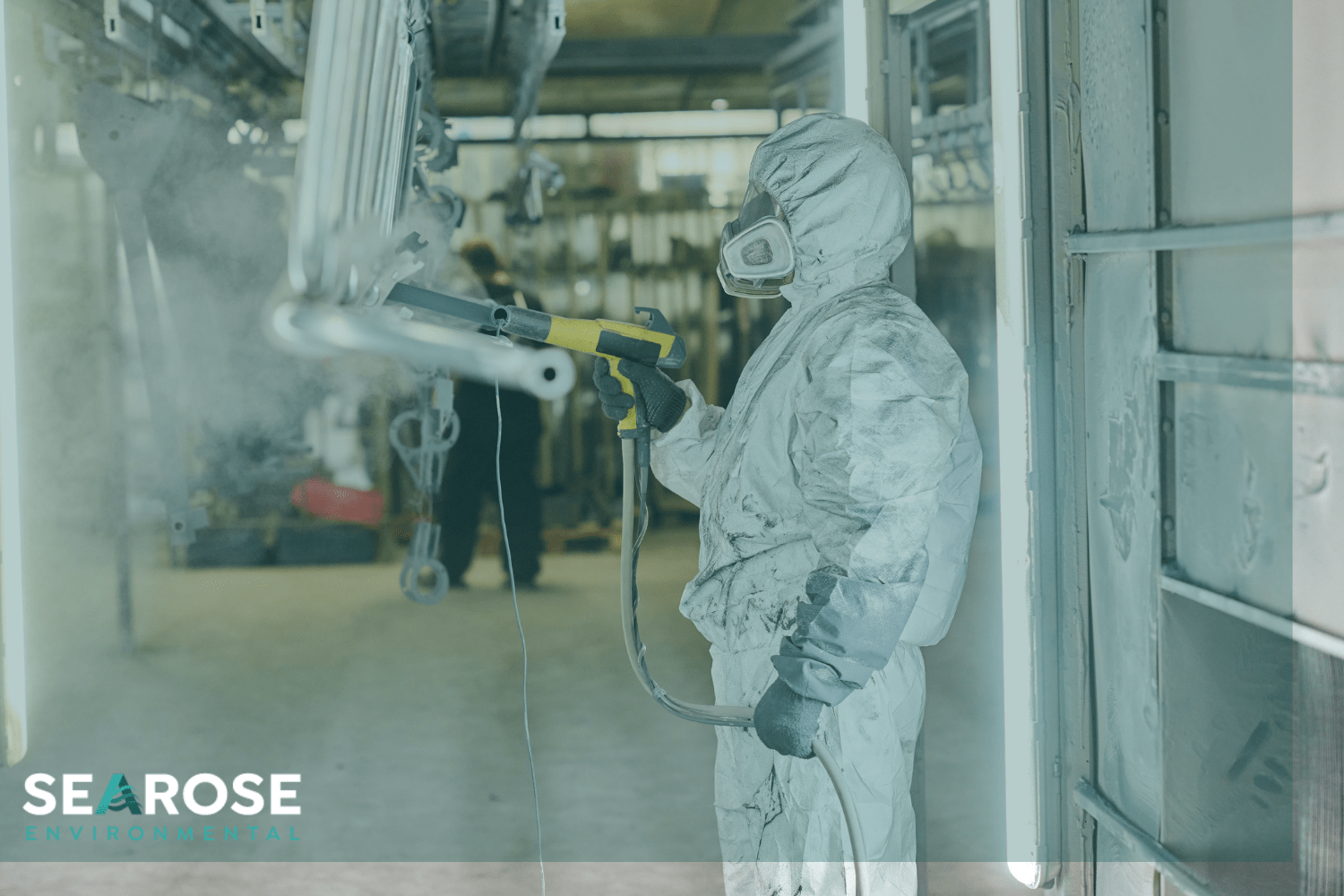When it comes to the operation of spray booths in the workspace, both operators and site managers are responsible for implementing and exercising safety guidelines to avoid costly and life-endangering dangerous consequences.
This guide outlines the importance of spray booth safety, as well as 7 essential tips for ensuring the safety of your spray booth operators and the rest of the workspace.
The Importance of Spray Booth Safety
The purpose of spray booths is to contain hazardous materials, fumes, and dust generated during the spraying process, preventing them from spreading into the environment. Safety is priority in the use of spray booths for several reasons:
- Operators that do not abide by safety standards risk inhaling or physical contact with the harmful substances used during spray painting, ranging from chemical solvents, to isocyanates, and heavy metals. Exposure to these hazardous substances can lead to serious health problems, including respiratory issues, skin irritation, and even cancer.
- The liquids and vapours applied during spray painting are often highly flammable. A spark or ignition source within the booth can easily trigger a fire or explosion, causing catastrophic damage and injuries.
- Overspraying within the booth can generate excessive amounts of liquids, which can pose both respiratory risks and create slippery surfaces.

Australian Guidelines for Spray Booth Safety
In Australia, there are strict guidelines for the installation and operation of spray booths.
The Spray painting and powder coating Model Code of Practice, published by Safe Work Australia in 2020, is applicable to all workplaces within Australia that utilise spray painting booths.
Standards Australia also highlights additional requirements for the placement and operation of spray booths (Code AS/NZS 4114.1:2003), as well as in the use and maintenance of respiratory protective devices for operators (Code AS/NZS 1715:2009).
1. Clearly define safety guidelines
The safety guidelines set out in the above standard and codes may not necessarily be clear to all workplace employees. Therefore, it’s essential that operation managers condense the standards into clearly defined guidelines (or a spray paint booth safety checklist) to ensure that they are understood by all in the workspace.
These safety guidelines can be in the form of a do’s and don’ts list, or a simple step-by-step process that can be followed. The key is to make the safety guidelines as easy-to-understand as possible to avoid confusion or negligence.
2. Ensure proper ventilation
Proper ventilation within the spray booth is a requirement for safe operation. Most spray booth designs will already have integrated ventilation and air filtration systems to ensure that the environment within the booth does not become too contaminated, especially under constant use.
Over time, these ventilation systems can become clogged or damaged. They will require specialised maintenance to keep them in good condition for optimal operation. Remember to schedule regular servicing for a spray booth’s ventilation system.
3. Create a safe working environment
A safe working environment starts from the top. Operation managers should set the tone for the workspace and encourage all employees to remain vigilant in adhering to workplace safety guidelines.
As much as possible, spray booth operators should have limited contact with hazardous chemicals. Less toxic paint alternatives should also be used to reduce the risk of contamination and health conditions.
4. Supply the right safety gear for the job
Giving operators the right equipment for spray booth operation encompasses personal protective clothing (PPC), respirators, spraying goggles, and chemical resistant gloves.
Keeping this equipment in good condition is essential as they are the protective layer between the hazardous chemicals and operators. Faulty equipment should never be used, and replacements must be made before spray painting can continue.

5. Ongoing risk management assessment
Even with all the necessary safety precautions beforehand, unexpected events can still jeopardise the spray paint booth operation. A naked flame nearby or even a spark from static electricity can ignite the flammable vapour in the booth and cause an explosion.
Always have a qualified member of staff supervising the spray painting booth while operation is ongoing. This will allow quick action to be taken when safety breaches are identified.
6. Understand the TLV (Threshold Limit Value)
TLV refers to the concentration of a painting substance that is within the air. Each substance has a unique TLV that must not be exceeded within the booth. When kept under the TLV, operators can work within the booth without any adverse effects.
The greater the toxicity of a substance, the lower its TLV. Safe Work Australia has documentation on the permissible levels of TLV, a variety of substances.
7. Invest in a high-quality spray booth
The quality of the spray booth itself is a major factor in ensuring spray booth safety. As with most equipment, higher cost models will feature more state-of-the-art designs, including better safety features.
When it comes to safety, cutting costs in the short term on a low quality spray booth can potentially result in costly safety risks down the line. Investing in a high-quality spray booth can help avoid the pitfalls of poor spray booth safety while increasing the efficiency of operations.
At Searose Environmental, we offer design and installation services for custom spray booths to fit the operational needs and workspace of any type of business. Our leading spray booth solutions in Brisbane also extend to maintenance and repair services to ensure that spray booths are kept in optimal condition for safety and compliance with Australian standards. Contact us today to find out how we can supply and install spray booths for your business.
